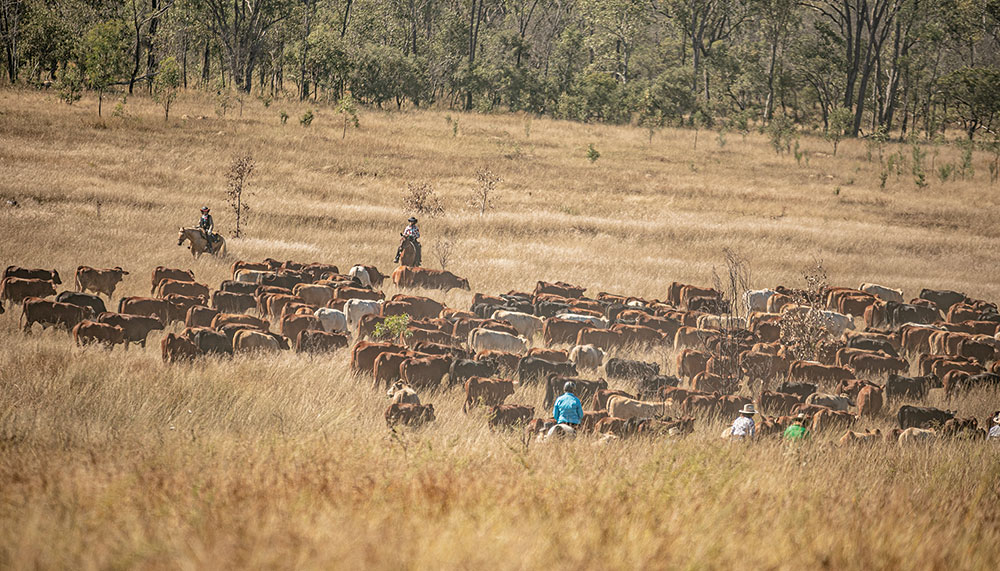A week-long cattle drive in outback Queensland offers an authentic bush experience.
Story + Photos Paula Heelan
It’s a balmy, mid-afternoon on Tireen station, 60km west of Eidsvold in Queensland’s North Burnett region. Beneath a clear blue sky, 32 drovers on horseback are pushing more than 470 head of cattle through long, dry spear grass in an open paddock.
It’s day two of the Eidsvold Cattle Drive and the mob has settled into a slow and easy rhythm on this historic stock route. Apart from the odd crack of a whip or whistle, a soft bellow from the herd or gentle whinny, it’s remarkably quiet. The drovers leading the mob are controlling the pace and direction and others on the wings and tail are keeping the mob together and retrieving the occasional rogue beast. The 25 guest riders, here for a week-long droving experience along an 80km section of the old stock route, are pinching themselves. Suddenly, in this idyllic bush setting, they have time – time to observe and learn about life and work on the land, time to chat with fellow drovers, to make new friends and, essentially, time to contemplate.
This droving trip, led by two unstoppable boss drovers, Ned Neumann, who turns 90 this year, and Ron Bligh, 80, began at Glencoe station, 75km west of Eidsvold. The cattle, donated for the drive by local producers, have been handled over the previous few days by Ned and Ron and their dedicated droving team in preparation. With decades of droving experience, the two boss drovers are on hand from dawn to dusk. Their stamina, humour, skills and yarning are an inspiration to everyone enjoying the privilege of riding alongside them. With Eidsvold the destination, the mob is to be taken through six cattle properties. Makeshift camp sites are set up each night on the stations: Glencoe, Tireen, Tandora, Culcraigie, Euroka and the heritage-listed Eidsvold station. Host families on each of the properties help with camp sites, water for stock and yarding the cattle. Each day the ride is different. The mob could be moving through open, spear and native grass country in a wide crescent shape and on other days it needs to string out to move through the timber country of mostly ironbark, blue gum, brigalow and box trees.
This story excerpt is from Issue #143
Outback Magazine: June/July 2022









